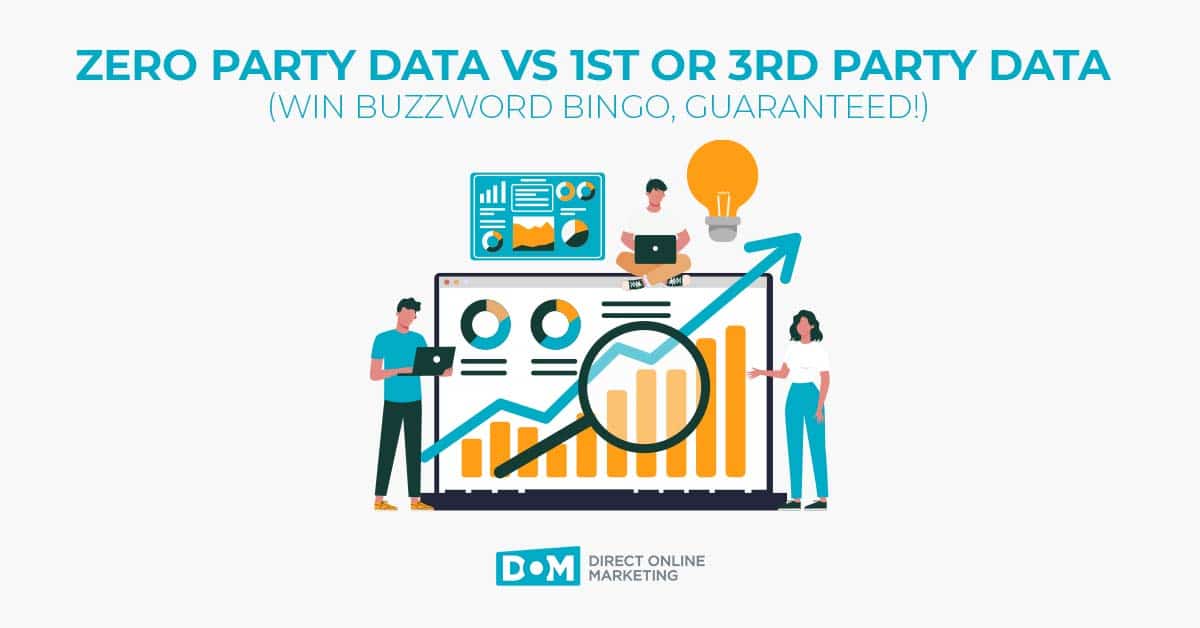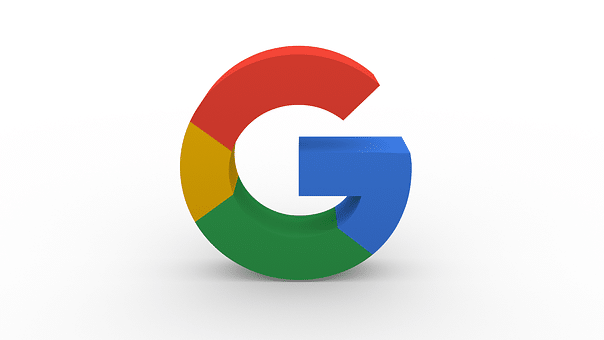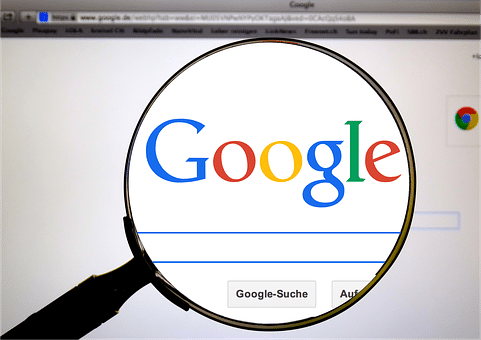
Zero-party data (ZPD) is one of the latest buzzwords that’s causing a ruckus in the world of marketing, and we think there’s a good reason for that.
But is ZPD just a bunch of hype? Jargon? A buzzword?
To be honest, when we first heard the term being thrown around late last year, we had those same thoughts, too.
We also couldn’t help but think back to a certain IBM commercial created by Ogilvy in 2007. Press play below for a cringe-worthy walk down memory lane.
Whether you just stepped out of an innovation meeting that killed you, or you came across this term in a MarketingProfs article and feel like you need to be brought up to speed on it – don’t worry. Zero-party data is not some meaningless buzzword or an empty topic that should cause you to reference your past at all!
Instead, it’s a look at the future of customer data collection that can be used for your marketing.
So What Is Zero-Party Data?
Zero-party data is the new kid on the data collection block. The tricky thing about zero-party data is that it’s a lot like first-party data (more on that in the next section). In fact, there are people out there who don’t even think it needs its own category.
The term was coined by Forrester Research, and is officially defined as “data that a customer intentionally and proactively shares with a brand, which can include preference center data, purchase intentions, personal context, and how the individual wants the brand to recognize her.”
So zero-party data is basically data that’s being willingly given to you by your customers.
An example is when a customer provides communication preferences, i.e. “Please email me special offers.” Other examples may include when users:
- Choose their interests while creating a profile on a shopping site (following authors or brands on Amazon)
- Give “thumbs up” ratings to shows and movies on streaming platforms (+1 Murder She Wrote on Peacock) with the intent of being presented other relevant suggestions
Much like first-party data, or maybe more accurately as a component of first-party data, zero-party data’s value will be heavily tied to your ability to centralize and organize it.
So what’s the significance here? Why are we talking about zero-party data so much?
Well, it just so happens that your zero and first-party data methods are about to become more significant than ever, due to the gradual decline of availability of third party data.
Before we get into all of that, let’s back up a little though and take a look at the more traditional collection methodologies – first and third-party data.
What is First-Party Data?
First-party data is essentially data that you collect yourself through your interactions with your customers. It could be demographics information, purchase history, the way they interact with your website, email engagements, support calls, customer feedback programs, etc.
It’s collected through customer purchases, support programs, and marketing programs, those sorts of things.
In terms of value and quality, first-party data is spectacular. That’s because you’re getting it straight from the customers. There aren’t any middle parties interpreting anything for you or muddying up the process. All of your first-party data is, by nature, accurate and relevant to your business.
Even better, first-party data is relatively easy to collect. As long as you make sure you’re using a central data platform to manage your data across all your sources and you follow any privacy laws in your country, your customer-related systems will naturally be collecting it and you’ll have access to it for data-driven decision making.
What is Third-Party Data?
Third-party data is acquired from data aggregators. Data aggregators take large datasets from multiple sources and compile them into a single dataset that can then be purchased for use in marketing.
For the most part, third-party data is purchased through a DSP (demand side platform) or a DMP (data management platform), but there are also a lot of third-party data marketplaces out there. Some of the more popular marketplaces are Google, Nielsen, and OnAudience.
The biggest concern with third-party data is that you simply don’t know where it came from, so you can’t be certain of its accuracy or reliability. You have all this aggregated data, but there’s no way to be sure how much it’s worth.
Also, you can’t be 100% certain that it was collected in a proper manner that followed privacy regulations. That means you have to put in some time to research your third-party data provider to make sure they’re legit.
So right off the bat it might seem like first-party data is superior to third-party, so why doesn’t everybody just use first-party data?
Well, it’s simple. First-party data gives you insights into customers who have already interacted with your brand. Third-party data gives you insights, albeit less reliable insights, into everybody else on a much larger scale. Thus, third-party data is what you can use to get more customers to interact with your brand.
All of that said, it may be a smarter move for your advertising campaigns to try to leverage your existing first party data to create campaigns to target third party potential clients and customers. Around here we commonly call those “lookalike audiences” although the different advertising platforms may call them something unique.
If you are currently leveraging third party data for your digital advertising and want to explore a better way to position your products and services to earn new customers, check out our retargeting services.
Google’s “Cookiepocalypse”
In 2020, Google announced that they plan to phase out third-party cookies in their browser, Chrome. Firefox and Safari have already taken measures to start blocking third-party tracking for the sake of privacy, but Chrome is the most used desktop browser on the planet.
What that means is that tracking user behavior is going to become a lot more difficult. Third-party data is going to possibly be less reliable and harder to come by. Maybe.
Recently, Google announced that they’re pushing their plan back to 2023, but it remains inevitable.
First and zero-party data are going to become even more valuable, and necessary, for delivering business results and making smart marketing decisions.
With Your Data, It’s Time To Stop Talking And Start Doing
Here at DOM, we believe in marketing that’s led by data. If you don’t have the data to back up your strategy, then you’re really just making a guess and hoping it will work.
Our expert data analysts aren’t the types of people that are just sitting behind a screen facilitating out of the box, value added solutions. They actually know how to find the message in your data and make it work for your business goals.
But no matter what type of data you have collected over the years – zero party, first party, or third party – your Google Analytics needs to be set up and optimized to work in tandem with your advertising campaigns.
We aren’t interested in creating some disruptive “web 3.0” solution just for the sake of doing it. Are you looking to turn your user data into a tool to produce better targeted marketing that gets results?
Great, check out our Google Analytics services or contact us to get answers to your questions about all of these data types and how they will work to solve your advertising challenges.






